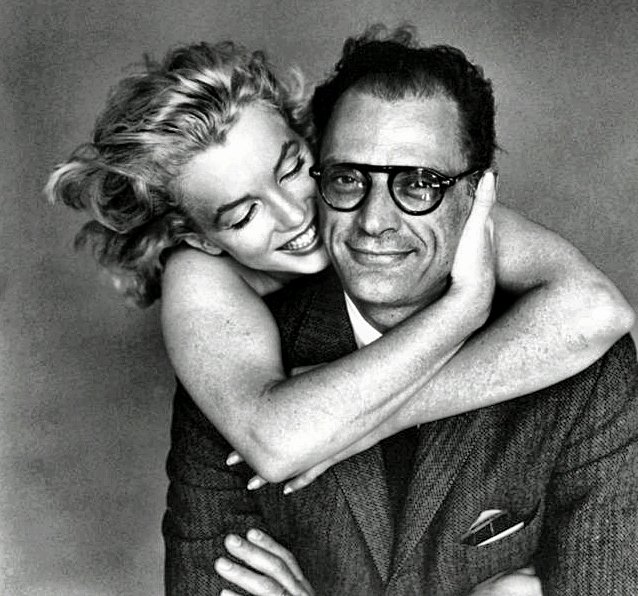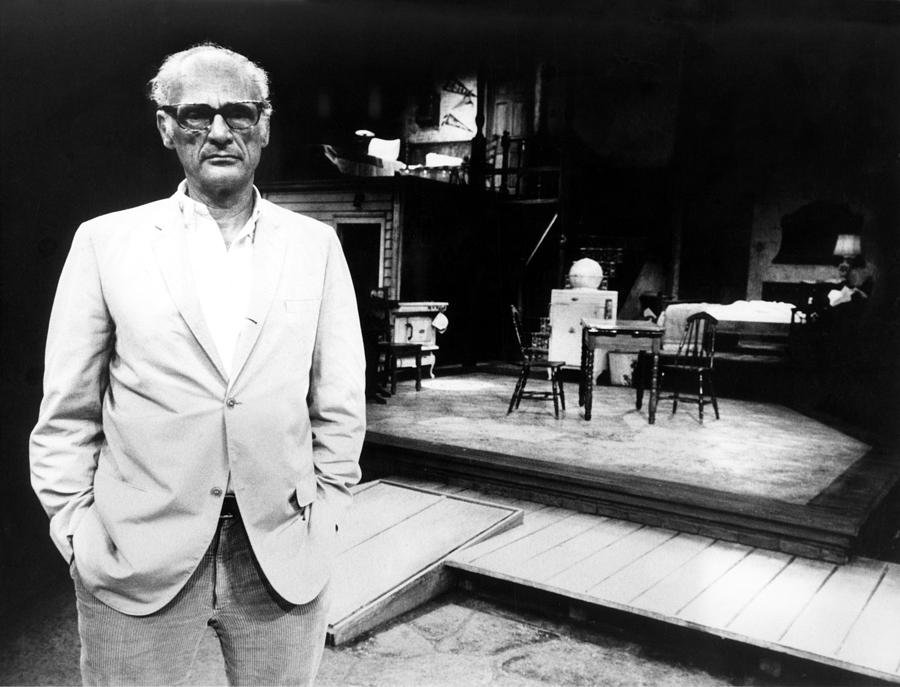Arthur Miller: American Witness by John Lahr, Yale U. Press (Jewish Lives) 2022
—Review by Cathy Ritchie
I’m always delighted when an Arthur Miller play is revived on Broadway. The past few decades have seen a steady number of his singular works re-created for both new audiences and old-timers like me, for whom Miller has always been a mainstay playwright. We’ve seen star-studded, Tony-Award-winning productions of All My Sons and A View From the Bridge, to name a few. I myself was privileged to see The Crucible, starring Liam Neeson, and The Price, with Mark Ruffalo and Tony Shalhoub.
And there’s more. As I write this, an all-Black cast is making history with a Broadway re-mounting of Miller’s legendary work Death of a Salesman, with Wendell Pierce as Willy Loman. I am always so pleased to be reminded that this seminal writer has not been forgotten.
His legacy also lives on via the printed page. Celebrated theater critic John Lahr has contributed a brief but pithy study, Arthur Miller: American Witness, to the outstanding “Jewish Lives” biography series published by Yale University Press. (This series’ other literary/entertainment subjects include Lillian Hellman, Ben Hecht, Leonard Bernstein, Irving Berlin, Barbra Streisand, Jerome Robbins and Groucho Marx, to mention a mere few. I cannot recommend the entire series highly enough to all biography buffs.)
While Lahr offers standard biographical data about his subject as needed, his approach forges an additional path, as he focuses on key events in Miller’s century-long life (1915-2005), and in America itself, that shaped his world—as per the book’s subtitle American Witness. And he periodically detours into analyses of Miller works particularly influenced by his Judaism. (For example, Lahr takes a close look at the playwright’s only novel Focus, written in 1945 and considered one of the first popular works to confront anti-semitism.)
Once Miller moved on to writing plays, which he found better suited to his abilities, he was greatly influenced by the politics of his time, including the social stirrings of the Depression years, the rise of fascism and especially his complex dealings with close friend and artistic collaborator Elia Kazan. The latter’s involvement with the House Un-American Activities committee sabotaged their bond until the 1960s. The fact that they also shared a romantic relationship with a particular blonde movie star for a time didn’t help. Even in the midst of depicting the nation’s 1950s political turmoil, Lahr cannot overlook the force of nature that was Marilyn.
Miller’s brief marriage to Monroe wreaked havoc on his life; his genuine early passion for her was all-encompassing but ultimately clashed head-on with her 24/7 need for professional and emotional support. Even with Miller to lean upon, she successfully managed to create chaos on every movie set via her chronic tardiness and thoughtlessness towards her colleagues. Monroe may still be revered in some circles as the most under-appreciated actress in film history, but I’ve sadly concluded she simply was not a very nice person. John Lahr offers nothing to refute my opinion.
While 1947’s All My Sons was Miller’s first Broadway play of note, after Salesman exploded onto the 1949 theater scene (Lahr describes its impact as “seismic”), his star continued its ascent for the next several decades, arguably cresting with The Price in 1967, while the 1970s and beyond witnessed a diminution of Miller’s output and success with critics.
As Lahr astutely summarizes, “Miller’s work could always find a stage; it just couldn’t always find an audience.” The playwright became an elder intellectual statesman of sorts, always active and opinionated, while continuing to create works with hopeful relevance. While his latter-day plays aren’t revived as often as his 1950s-1960s classics, it seems clear that Miller’s oeuvre has conquered the test of time for many a scholar and Broadway producer.
Lahr relies heavily on verbatim quotations from Miller’s massive 1987 memoir Timebends, along with remarks from his own personal conversations with the playwright before his death. Though some might disagree, I don’t find this technique oppressive or excessive: rather, for me, it’s an approach that adds clarity and texture to his narrative.
Readers wanting a more detailed nuts-and-bolts biography of Arthur Miller might need to look elsewhere, but John Lahr gives audiences deeper dives into particular facets of the writer’s life that shaped him irrevocably. This particular “Jewish life” is a solid addition to a continually satisfying informational series.

